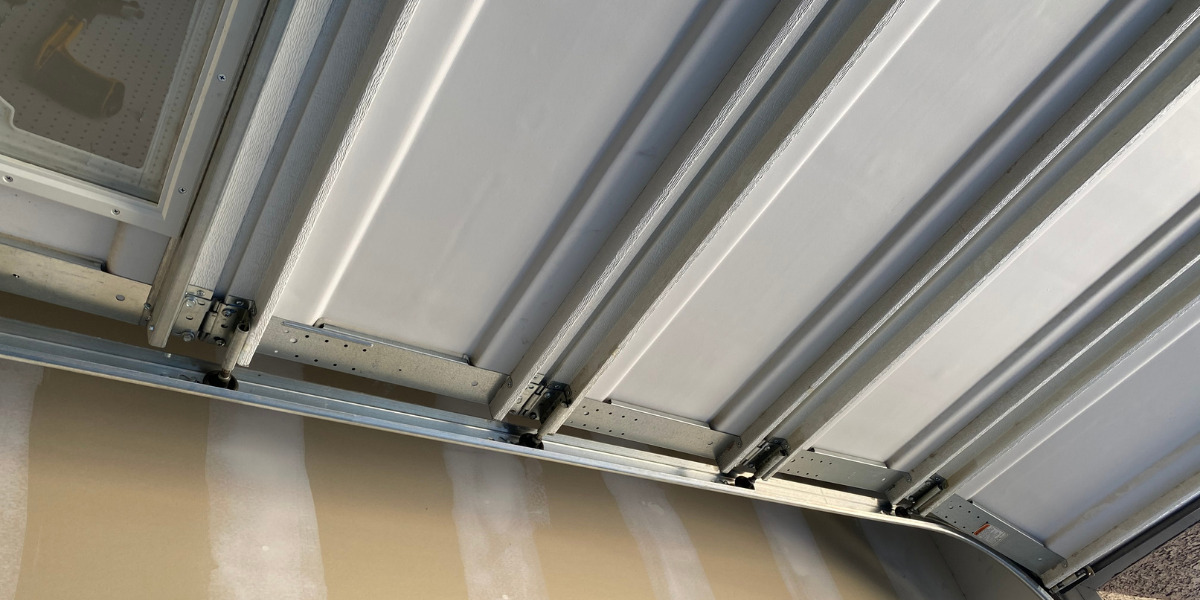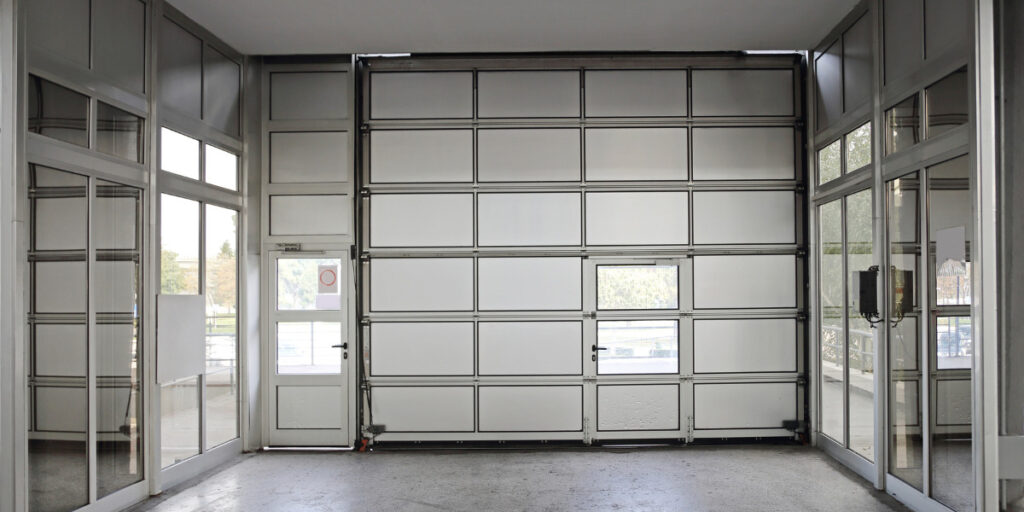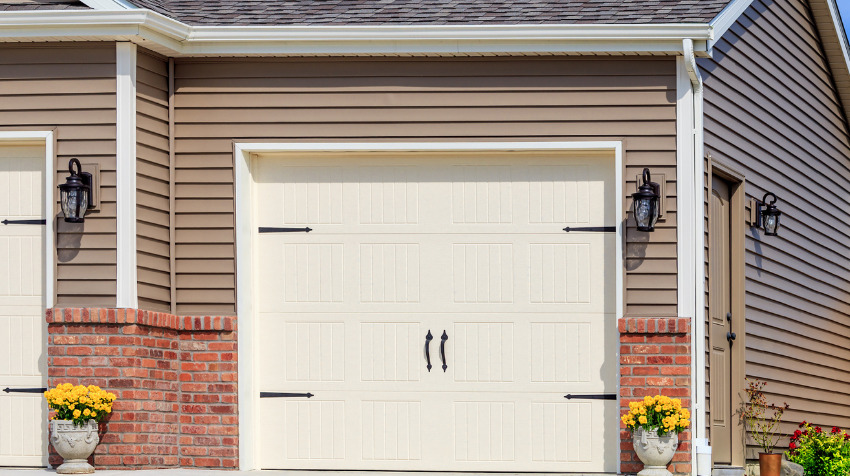Why Thermally Efficient Garage Doors Matter in Every Home
Investing in a thermally efficient garage door is a wise decision for homeowners seeking enhanced comfort and improved energy efficiency. As one of the largest openings in a house, the garage door plays a significant role in regulating indoor temperatures and affecting overall energy consumption. Traditional garage doors often lack adequate insulation, which can result in unwanted heat transfer, causing discomfort in extreme weather conditions and leading to increased energy bills.
In recent years, with a growing emphasis on sustainable living and energy conservation, homeowners have become increasingly aware of the benefits of upgrading to thermally efficient garage doors. These technologically advanced doors are designed to minimize heat transfer and maintain a more stable indoor climate, contributing to a more comfortable living space and reduced reliance on heating and cooling systems.
Impact of Garage Doors on Overall Thermal Performance of a Home:
Garage doors play a crucial role in the overall thermal performance of a home, affecting its energy efficiency and comfort levels. As the largest moving part of a house, garage doors can significantly influence heat transfer and air leakage, both of which impact the indoor temperature and energy consumption.
Heat Transfer
During hot summers or cold winters, garage doors act as a barrier between the outdoor and indoor environments. If the garage door lacks proper insulation or has gaps and cracks, it allows outside heat or cold to penetrate the interior spaces, making it difficult for the HVAC system to maintain a comfortable indoor temperature. This results in increased energy usage and higher utility bills.
Air Leakage
Traditional garage doors often have poor sealing, which can lead to air leaks. Uncontrolled air infiltration can introduce outside pollutants, dust, and allergens into the living spaces, affecting the indoor air quality. It can also cause drafts, making it uncomfortable for occupants and forcing the HVAC system to work harder to compensate for the temperature fluctuations..

Common Issues with Traditional Garage Doors Leading to Energy Inefficiency:
- Lack of Insulation: Many older or cheaper garage doors lack proper insulation, making them highly conductive to heat and cold. Without insulation, these doors fail to provide a thermal barrier, allowing external temperatures to impact the indoor environment.
- Inadequate Sealing: Traditional garage doors often have gaps and poor seals around the edges, allowing air to flow freely between the interior and exterior. These leaks can cause significant energy losses and discomfort inside the house.
- Material Choice: Some traditional garage doors are made from materials with low thermal resistance, such as uninsulated steel or thin wood. These materials have poor insulating properties and contribute to heat transfer, negatively affecting home comfort and energy efficiency.
- Single-layer Construction: Many older garage doors are constructed with a single layer of material, which offers little resistance to outdoor temperatures. As a result, they cannot effectively prevent heat or cold from entering the home.
Significance of Selecting a Thermally Efficient Garage Door for Long-term Comfort Benefits:
- Energy Savings: Investing in a thermally efficient garage door can lead to substantial energy savings over the long term. A properly insulated garage door reduces the need for constant heating and cooling, helping to maintain a consistent indoor temperature and lowering energy consumption.
- Enhanced Comfort: A thermally efficient garage door helps create a more comfortable living environment. It reduces drafts, minimizes temperature fluctuations, and enhances indoor air quality by preventing dust and outdoor pollutants from entering the home.
- Extended Lifespan of HVAC Systems: By reducing the workload on heating and cooling systems, a thermally efficient garage door can extend the lifespan of HVAC equipment. This not only saves money on utility bills but also reduces the frequency of maintenance and repairs.
- Environmental Benefits: Energy-efficient garage doors contribute to a more sustainable lifestyle by reducing overall energy usage and greenhouse gas emissions. Choosing eco-friendly options can have a positive impact on the environment.
- Increased Home Value: A home with energy-efficient features, including a thermally efficient garage door, is more attractive to potential buyers. Energy-conscious homebuyers recognize the long-term cost savings and improved comfort that come with these upgrades, making the property more marketable.
Factors to Consider for Thermally Efficient Garage Doors
Insulation Materials:
- Different Types of Insulation Materials: Garage doors can be insulated using various materials, with two common options being polyurethane and polystyrene.
- Polyurethane: This type of insulation is typically injected between two steel layers of the garage door, forming a dense and continuous layer. Polyurethane offers excellent thermal performance and can provide a higher R-value compared to polystyrene.
- Polystyrene: Polystyrene is usually applied as rigid foam panels inserted into the garage door sections. While it also provides decent insulation, its R-value is generally lower than that of polyurethane.
- Comparison of Thermal Performance, Durability, and Eco-friendliness:
- Thermal Performance: Polyurethane insulation has superior thermal performance due to its higher R-value, which measures the material’s resistance to heat transfer. It offers better energy efficiency, helping to maintain stable temperatures inside the garage.
- Durability: Polyurethane tends to be more durable and resistant to sagging over time. It adheres firmly to the door’s layers, ensuring long-lasting insulation effectiveness. Polystyrene, while still durable, may be more susceptible to wear and tear in the long run.
- Eco-friendliness: Both materials have some environmental impact. However, polyurethane may have a slight advantage as it can be made with a higher percentage of renewable or recycled materials. Polystyrene can also be recycled, but it’s essential to consider the manufacturing processes and the potential for off-gassing during disposal.
R-value and U-factor:
- Importance of R-value and U-factor: R-value and U-factor are crucial metrics used to evaluate the thermal efficiency of insulation materials in garage doors.
- R-value: It measures the insulation’s ability to resist heat flow. A higher R-value indicates better insulation performance and reduced heat transfer through the door.
- U-factor: This measures the rate of heat transfer. A lower U-factor signifies less heat loss, making it another essential indicator of thermal efficiency.
- Recommendations for Ideal R-values and U-factors based on Climate Zones: The recommended R-value and U-factor for garage doors can vary based on the climate zone.
- For colder climates with harsh winters, a higher R-value and lower U-factor are essential to keep the garage space warm and reduce heating costs.
- In moderate climates, a balance can be struck between thermal efficiency and cost-effectiveness, opting for insulation that provides a reasonable R-value and U-factor.
- In warmer climates, preventing heat gain through the garage door is crucial, and selecting an insulation material with a lower R-value and higher U-factor may be more suitable.
Weatherstripping and Seals:
- Role of Weatherstripping and Seals: Weatherstripping and seals play a critical role in maintaining the thermal efficiency of a garage door by preventing air leaks.
- Air Leaks: Gaps or cracks in the garage door can allow outside air to seep in, affecting the interior temperature and potentially increasing energy consumption.
- Weatherstripping and Seals: These components are installed around the edges of the garage door to create a tight seal when the door is closed, preventing unwanted airflow.
- Types of Weatherstripping Materials and Effectiveness:
- Rubber or Vinyl Weatherstripping: These materials are cost-effective and commonly used. They provide good insulation properties and are effective at sealing gaps.
- PVC Stop Molding: This rigid material is used to seal the sides and top of the garage door effectively. It provides a durable and long-lasting seal.
- Brush Seal: Brush seals use flexible bristles to create a barrier against air infiltration. They are particularly useful for irregular or uneven surfaces.
Design and Construction:
- Impact of Design and Construction on Thermal Efficiency: The design and construction of a garage door can significantly influence its thermal performance.
- Panel Thickness: Thicker panels generally offer better insulation as they can accommodate more insulation material.
- Panel Joints: Properly designed joints and seals between panels are essential to minimize heat loss through gaps.
- Material Quality: High-quality materials and construction contribute to the overall efficiency and durability of the garage door.
- Significance of Energy-efficient Window Options: If the garage door includes windows, choosing energy-efficient options is crucial to maintaining thermal efficiency.
- Double or Triple-glazed Windows: These windows have multiple layers of glass with gas-filled spaces in between, providing better insulation than single-pane windows.
- Low-E Coatings: Low-emissivity coatings on windows can reduce heat transfer and minimize the greenhouse effect, keeping the interior cooler in hot climates and warmer in cold climates..
Advantages of Investing in a Thermally Efficient Garage Door
Energy Cost Savings:
1. Thermally efficient garage doors are designed to minimize heat transfer between the interior of the garage and the external environment. By having better insulation and sealing properties, these doors prevent air leaks, which can significantly reduce the amount of energy required to heat or cool the garage.
During cold winters, a thermally efficient garage door helps retain heat within the garage, preventing it from escaping to the outside. This means that the heating system doesn’t have to work as hard to maintain a comfortable temperature inside the garage, leading to reduced energy consumption and lower heating costs.
Conversely, in hot summers, the thermally efficient door keeps the hot air from entering the garage, helping it stay cooler. As a result, the cooling system doesn’t need to run as frequently or at high capacity, leading to savings on cooling costs.
2. The potential long-term savings for homeowners can be quite significant. While the upfront cost of a thermally efficient garage door might be slightly higher than a standard door, the energy cost savings over time can more than make up for the initial investment. Homeowners can expect to see reduced utility bills throughout the year, leading to considerable savings in the long run.
Additionally, energy-efficient features are often valued by potential homebuyers. So, if the homeowner decides to sell the property in the future, having a thermally efficient garage door can increase the resale value of the house.
Enhanced Comfort:
1. With a thermally efficient garage door in place, the garage space becomes much more comfortable throughout the year. The insulation properties of these doors help maintain a stable temperature inside the garage, making it a more pleasant environment for various activities.
During cold weather, the garage becomes a more suitable space for tasks such as DIY projects, hobbies, or even just parking the car, as it won’t feel freezing and unwelcoming.
2. The impact on adjacent rooms and overall indoor comfort is also noteworthy. Many homes have living spaces situated directly above or adjacent to the garage. A thermally efficient garage door prevents temperature fluctuations in the garage, which, in turn, helps to stabilize the temperature in the adjoining rooms. This creates a more comfortable living environment for the entire household.
Environmental Benefits:
- Using a thermally efficient garage door contributes positively to the environment in various ways. First, by reducing the energy consumption needed for heating and cooling, it helps to lower the overall demand for energy resources. This, in turn, reduces greenhouse gas emissions associated with energy production, mitigating the impact of climate change.
- Emphasizing the role of homeowners in reducing their carbon footprint is essential. By making conscious decisions to invest in energy-efficient solutions like a thermally efficient garage door, homeowners actively participate in sustainable practices. These small yet meaningful actions collectively have a significant impact on reducing environmental pollution and conserving natural resources.
By opting for eco-friendly solutions, homeowners set an example for their communities and encourage others to make environmentally conscious choices.
Maintenance Tips for Longevity and Thermal Efficiency of the Garage Door:
- Lubrication: Regularly lubricate all moving parts of the garage door, such as hinges, rollers, tracks, and springs. Lubrication reduces friction and wear, preventing premature breakdown and ensuring smooth operation. Use a high-quality silicone-based or lithium-based lubricant for best results.
- Tighten Hardware: Inspect and tighten all nuts, bolts, and screws on the garage door. Over time, vibrations from opening and closing can cause hardware to loosen, affecting the door’s stability and efficiency.
- Weatherstripping: Check and replace the weatherstripping around the garage door. Weatherstripping seals gaps between the door and the frame, preventing drafts, moisture, and debris from entering the garage. This helps maintain the thermal efficiency of the space, especially if the garage is attached to the house.
- Balance the Door: Periodically test and adjust the balance of the garage door. An imbalanced door puts undue stress on the opener and can cause uneven wear on the springs and cables. If the door is difficult to lift manually or appears crooked, it may be out of balance and require adjustment.
- Insulate the Garage Door: If your garage door isn’t already insulated, consider adding insulation panels or an insulated garage door. Insulation helps regulate the temperature inside the garage, making it more energy-efficient and reducing heat loss during extreme weather conditions.
Regular Inspections and Cleaning Routines:
- Visual Inspection: Conduct a visual inspection of the garage door and its components at least once a month. Look for signs of wear, rust, dents, or any visible damage. Addressing minor issues early can prevent them from becoming major problems.
- Test Safety Features: Test the garage door’s safety features, such as the auto-reverse mechanism. Place an object in the door’s path and check if it reverses upon contact. This feature is crucial for preventing accidents and injuries.
- Clean the Tracks: Regularly clean the tracks to remove dirt, debris, and other obstructions that can impede the door’s smooth movement. Use a soft cloth or brush to avoid scratching the surface.
- Check Cables and Springs: Inspect the cables and springs for signs of fraying or wear. These components are under high tension and should only be adjusted or replaced by a professional garage door technician.
- Clean and Paint the Door: Wash the garage door with mild soap and water to remove dirt and grime. If it’s a wooden door, consider repainting or resealing it every few years to protect it from the elements.
Importance of Addressing Issues Promptly to Prevent Energy Loss:
- Energy Efficiency: A well-maintained and properly sealed garage door plays a significant role in maintaining energy efficiency in your home. Energy loss through a poorly insulated or damaged garage door can result in higher heating and cooling costs.
- Temperature Regulation: During extreme weather conditions, an inefficient garage door can allow outdoor temperatures to seep into the garage and affect the adjacent rooms in the house. Addressing issues promptly helps maintain a stable and comfortable indoor temperature.
- Cost Savings: By promptly addressing issues with your garage door, you can prevent energy wastage and potentially save money on utility bills. A well-maintained door will work more efficiently and keep your garage and home better insulated.
- Extended Lifespan: Regular maintenance and timely repairs can significantly extend the lifespan of your garage door. Ignoring problems can lead to more severe damage, shortening the door’s lifespan and requiring costly replacements sooner than expected.
- Enhanced Safety: Addressing issues promptly also ensures that the garage door operates safely. Malfunctioning doors can pose safety hazards to family members and pets, leading to accidents or injuries.
Frequently Asked Questions
Why is it essential to invest in a thermally efficient garage door? A: Investing in a thermally efficient garage door is crucial for several reasons. It helps to maintain a comfortable temperature inside your garage, prevents energy loss, and reduces heating and cooling costs for your home. Additionally, a thermally efficient garage door can enhance the overall energy efficiency of your property, leading to a more sustainable and environmentally friendly living space.
What is the ideal R-value for a thermally efficient garage door? A: The ideal R-value for a thermally efficient garage door depends on your location and climate. In colder climates, consider a garage door with an R-value of 10 or higher for optimal insulation. In milder climates, an R-value of 6-8 may be sufficient. Consulting with a garage door professional or an energy specialist can help you determine the best R-value for your specific needs.
Can I install a thermally efficient garage door myself, or do I need professional help? A: While some homeowners with advanced DIY skills may attempt to install a garage door themselves, it is generally recommended to seek professional help. Garage door installation requires precision and knowledge of the specific components and mechanisms involved. A professional installer can ensure proper fitting, alignment, and weatherstripping, maximizing the door’s thermal efficiency.
Will a thermally efficient garage door increase the value of my home? A: Yes, investing in a thermally efficient garage door can increase the value of your home. Energy-efficient features are becoming increasingly attractive to homebuyers as they not only reduce utility costs but also contribute to a more eco-friendly living space. A thermally efficient garage door, along with other energy-efficient upgrades, can make your home more appealing to potential buyers.
Are there any government incentives or rebates for installing energy-efficient garage doors? A: Government incentives and rebates for energy-efficient upgrades can vary depending on your location. It’s advisable to check with local or national energy authorities, utility companies, or official websites to see if there are any available incentives for installing an energy-efficient garage door. In some regions, you may be eligible for tax credits or rebates for making energy-saving improvements to your home.
In conclusion, a thermally efficient garage door is a wise investment that offers a multitude of benefits, both in terms of comfort and financial savings. When looking to identify such a door, pay attention to factors like insulation R-value, weatherstripping, material quality, and the overall construction. Consulting with reputable garage door manufacturers or energy efficiency experts can help you make an informed decision and select the right door for your specific needs.
Remember that the benefits of a thermally efficient garage door extend beyond your home’s energy performance; it enhances your overall quality of life and contributes to a greener and more sustainable future. By prioritizing thermal efficiency in your garage door choice, you take a significant step towards creating a more comfortable and eco-friendly home environment.





